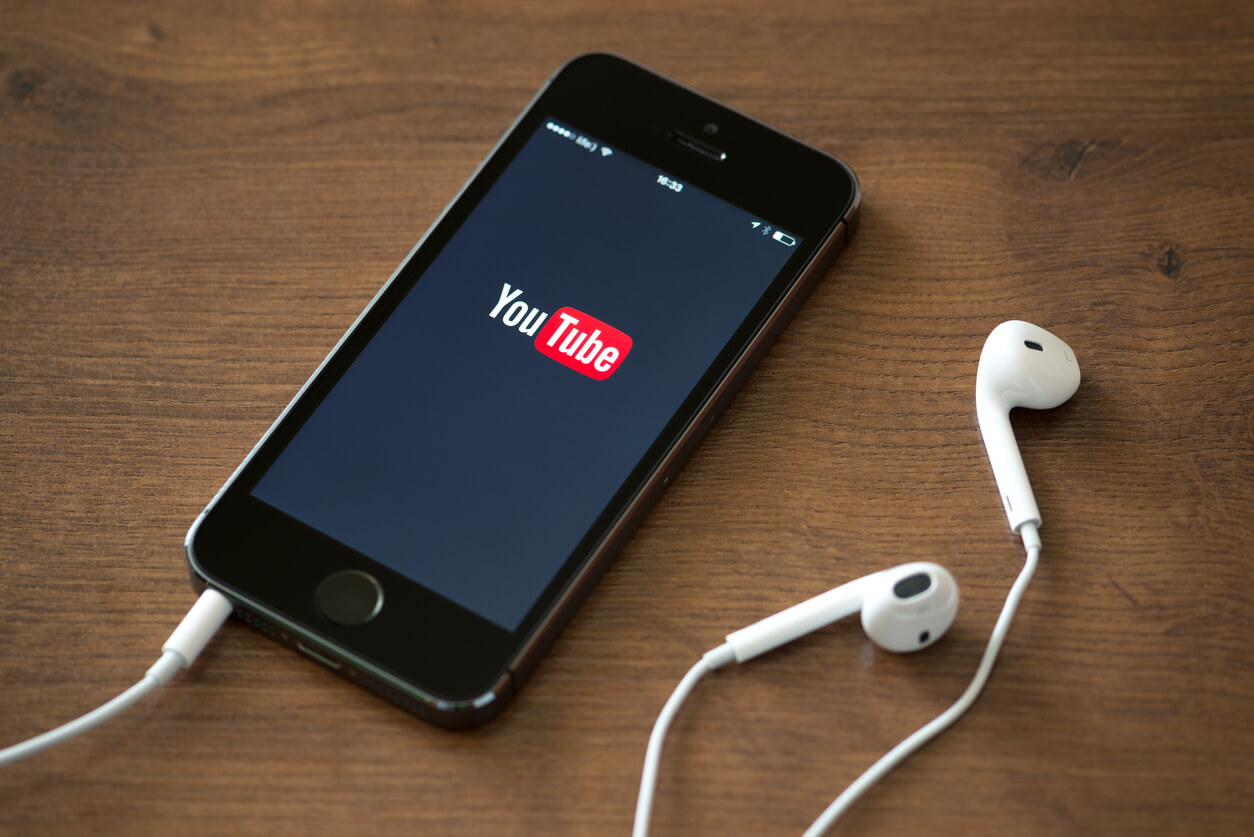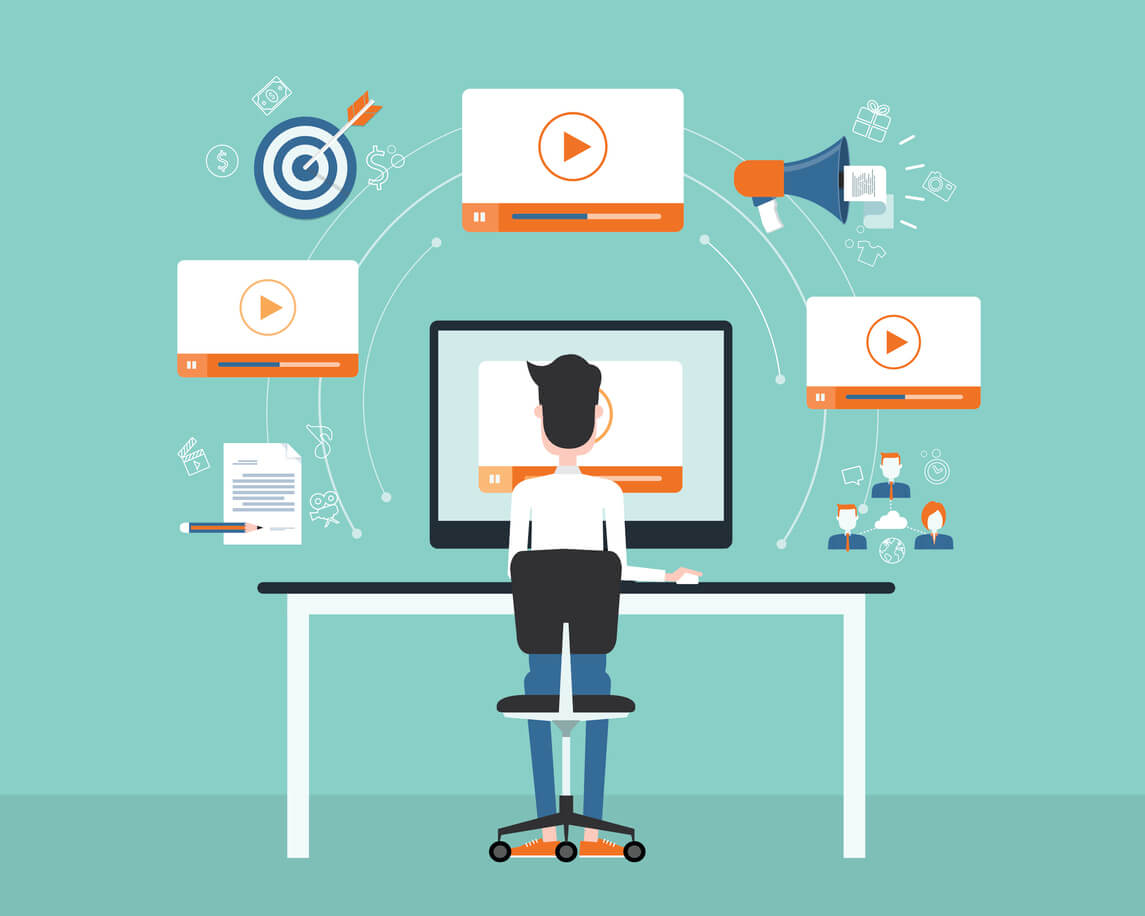Live Video Streaming: When Should You Be Using Facebook Live?
We talk a lot on this blog about the growing popularity of live streaming. Recently, perhaps nothing exemplifies this better than the ability to live stream using Facebook Live. With a user base of more than 1.75 billion and annual revenues of nearly $18 billion, the company is a behemoth. The Atlantic, in an article called “Facebook is Eating the Internet,” says that calling Facebook huge is a diminishing understatement.
Translation: when Facebook makes a move, others should listen. Therefore, when Facebook began to experiment with live streaming and launched the feature to all users in April 2016, the video world took note. With one stroke, Facebook had brought live video broadcasting to nearly 25 percent of the world population. Now anyone can stream live on Facebook.
Let’s talk about the actual product first. Using Facebook Live has definite pros and cons. In this essay, we’re going to examine these specifics and discuss the best use-cases for this technology. We’ll also look at some of the drawbacks of the platform to help you know when you should not be using Facebook Live. First, a Facebook live review.
Facebook Live review
[Tweet “Here’s how to #livestream on Facebook, and the pros and cons of the platform:”]First, the basics: Facebook Live is a free live streaming platform that is integrated with your Facebook account.
 Using Facebook Live to broadcast
Using Facebook Live to broadcast
There are two ways to use Facebook Live for live streaming.
The first is from a smartphone.
- On your phone, start streaming by opening the Facebook app.
- Then tap the status area labeled “what’s on your mind?” The screen that appears will have a row of icons along the bottom.
- The icon on the far right is a person’s head and shoulders surrounded by a “halo” of radio waves. Tap this icon and you’ll be presented with a number of options for your live stream.
- You can create a short description, define a target audience, and tap to go live.
Note that you’ll need a relatively powerful internet connection for streaming to function. Fast 4G cell networks should usually be adequate, but for the best results use cable internet or something faster.
On a desktop, Facebook Live streaming can only take place from a Facebook page. Streaming from your personal profile isn’t possible. To stream on desktop, you’ll need to be prepared with an audio/video source connected to an encoder. To learn more about encoders, check out our previous blog on the subject. Here’s how it works:
- Visit your Facebook Page, then click the tab labeled “Publishing Tools” at the top of the screen.
- On the next page, in the sidebar on the left side of the screen, click the option labeled “Video.”
- Then click the button labeled “+ Live” near the top right.
- In the popup “Create Live Video” field that appears, enter information about your stream. This includes the Stream URL and, if applicable, Stream Key. These will be provided by your live streaming encoder.
- Click next, and then you’ll have an option to add a title and tags. You can also restrict embedding, change post-event playback settings, and retrieve an embed code.
- Finally, click to go live. You’re all set!
Facebook Live drawbacks
Before we get too much further, we need to discuss some of the drawbacks of Facebook Live. Yes, there are a number of them that you should be aware of before using Facebook Live. For many users, these are serious issues. Let’s explore a few in more detail.
Content licensing issues
When you post content to Facebook—including live streaming video content—some of the rights transfer to Facebook. You still own the copyright, but Facebook gains the right to use that content. They can use it anyway they would like, for free, in perpetuity. They can also transfer those rights to others.
While this license is revoked if you delete your content, this still brings up some serious concerns. Business users and professionals especially may wish to avoid this restriction. If you’ve already negotiated rights and licensing issues for your video streaming, these clauses may also impact those agreements.
Associated content
When you post to Facebook, your content gets lumped in with everything else in the Newsfeed. Unless your viewers are watching exclusively on your page, other posts will appear next to your content.
Most of the time, this doesn’t represent a problem. However, negative reviews, competitor advertising and posts, and morally objectionable material can all potentially turn up next to your material because of this, leading to embarrassing screenshots and problematic ideas among your base.
Monetization difficulties
One of the reasons that people live stream is to generate revenue. It’s possible to make a good deal of money through streaming online. This can happen through a number of different methods, including advertising, pay-per-view, and subscriptions. Each method has upsides and downsides, as we’ve covered before.
However, monetization options on Facebook are currently non-existent. Pay-per-view and subscriptions are simply impossible. Advertising may be incorporated in the future, but it’s not there yet. Even if and when advertising is supported, it has some serious drawbacks.
If you want to make money off your streams, using Facebook Live might not be the best alternative.
Content management tribulations
Another drawback when using Facebook Live is the ineffective content management tools. Live videos that you share can be auto-archived and shared for later on-demand viewing. However, the interface for managing these videos is inefficient and features are sparse.
Technical support
 Another issue with Facebook Live is the lack of technical support. While the product is relatively robust, problems can occur. When they do, no definitive help resource is available. Facebook product forums only share general information and rarely feature expert advice. In the midst of a live stream, the last thing you need is problems with technology. Tech support can be a lifesaver when problems occur during a live stream. Professional online video platforms like Dacast offer 24/7 support, but Facebook offers no such feature
Another issue with Facebook Live is the lack of technical support. While the product is relatively robust, problems can occur. When they do, no definitive help resource is available. Facebook product forums only share general information and rarely feature expert advice. In the midst of a live stream, the last thing you need is problems with technology. Tech support can be a lifesaver when problems occur during a live stream. Professional online video platforms like Dacast offer 24/7 support, but Facebook offers no such feature
Content blocking
Facebook is one of the world’s most-blocked websites. Many businesses, schools, and other institutions all block the social media platform. This is done in an effort to increase productivity so people aren’t wasting time. However, these blocks can be very problematic if you’re trying to reach certain audiences. If you’re going to use Facebook Live, consider your target audience and their internet access carefully.
Branded video
Every video you post on Facebook will include the Facebook logo. This can detract from the seriousness and professionalism you wish to display.
[Tweet “Branding, lack of monetization options, and content blocking are among the main drawbacks of Facebook #livestreaming.”]Facebook Live benefits
With all that said, there are some cool benefits when using Facebook Live. For starters, it has a huge audience. Additionally, the Facebook App on mobile devices makes it extremely easy to stream in Moments.
You can broadcast from professional-grade sources with Facebook Live. However, quality limitations (like the 720p maximum resolution) detract from the service. More professional platforms offer features and functionality that far surpass Facebook Live.
When should you be using Facebook Live
So, when exactly do we recommend using Facebook Live? There are a few different types of situations that make this platform ideal. Some good use-cases for Facebook Live include:
- Broadcasting on a whim.
- Streaming unpredictable moments as they happen.
- Quick live-streams (especially from the field).
- Advertising and shout-outs for other upcoming events.
- Saying hello to friends and family.
- Simulcasting events to build your Facebook audience. Some professional broadcasters use this method to grow their audience by spreading select content for free.
- Testing out live streaming technology for the first time.
Alternatives to Facebook Live
As you can see from this review, Facebook Live is a powerful platform that has some limitations. That’s fine! For what it’s made for, it’s a great platform. It’s just not made for many different types of users.
With that said, let’s look at a few alternatives to Facebook Live.
YouTube Live review
 We’ll start with a brief YouTube Live review. YouTube Live is Google’s version of free social live streaming. However, with YouTube being a dedicated video platform, you can bet that it is more powerful than Facebook’s offering. It does, however, still have limitations.
We’ll start with a brief YouTube Live review. YouTube Live is Google’s version of free social live streaming. However, with YouTube being a dedicated video platform, you can bet that it is more powerful than Facebook’s offering. It does, however, still have limitations.
Stream live on YouTube
YouTube Live streams can be started instantaneously from a webcam or connected camera. Alternatively, they can be scheduled in advance for broadcast from an encoder or other professional sources. When it comes to search and SEO, YouTube (being a Google company) is much superior to Facebook. Content is indexed by search engines, and you can easily insert links to your websites. YouTube videos tend to rank relatively high in search results, which is a plus for many users.
Like Facebook Live, YouTube Live supports all basic live streaming features, including embedding. They also support resolutions up to 4K and some other advanced features, like 360° video streams.
Drawbacks of YouTube Live
With all that said, there are still some big drawbacks when it comes to YouTube Live. As with Facebook Live, you lose control of the content that you post to the site. This is one of the costs of using a free service. YouTube gains certain rights to reproduce, sub-license, and use whatever you post to the platform.
Another major drawback of YouTube is content blocking. Like Facebook, YouTube is among the most-blocked websites in the world. It would be truly unfortunate if your valuable live stream was stymied by a simple internet block.
YouTube Live also shares the same difficulties as Facebook Live around branding, technical support, and associated content. Monetization is supported on YouTube, but only via advertising. As we’ve noted, this is generally an inferior model for generating revenue.
[Tweet “How does YouTube Live stack up to Facebook? It’s a free #livestreaming showdown:”]Professional video hosting and streaming services
Another alternative to free services like Facebook Live and YouTube Live is a professional video host and streaming service provider. For a fee, these companies will provide a superior live streaming platform with many more features.
Costs vary, and most providers offer different packages for users with varying needs. Some providers offer highly affordable packages, while others are aimed at large businesses willing to pay a premium price.
Let’s take a look at some of the features offered by professional live streaming service providers. Keep in mind that different platforms offer different features. Make a list of your priorities and do your research before selecting a platform!
Monetization
 Many services offer monetization options that are powerful and simple. For example, our own service here at Dacast includes a built-in pay-per-view or subscription-based payment system. Viewers enter their payment details right in the video player window, allowing for videos embedded on external sites to be monetized as well.
Many services offer monetization options that are powerful and simple. For example, our own service here at Dacast includes a built-in pay-per-view or subscription-based payment system. Viewers enter their payment details right in the video player window, allowing for videos embedded on external sites to be monetized as well.
White label service
Unlike free live streaming providers, paid hosts often offer “white label” service. That means that no corporate branding is featured on the videos, resulting in a clean, professional look. However, be aware that some service providers charge a great deal for this feature.
Security features
When broadcasting, there are a number of reasons to consider security. For example, you may be working to avoid content piracy. If you’re in the medical or legal field, you have to worry about confidential patient/client information. In business, essential financial and operations information has to be protected. Or, you may simply need to restrict access to comply with your content licensing agreements.
In any case, these sorts of restrictions are impossible on free platforms. A dedicated host offers features like IP Address/Geographic restrictions, referrer restrictions, token-based security, DRM, and more.
Custom video players
For a highly professional look, a custom video player goes a long way. Matching colors and branding to your business or organization is relatively easy when using a custom video player. Most video streaming service providers will allow you to use custom video players at no additional cost.
Technical support
Look for a video platform that offers some level of technical support. This can be essential for getting streams up and running. This is especially true if you are relatively new to live streaming.
[Tweet “Professional video streaming platforms include tech support, monetization, and other advantages over free services. #livestreaming #OVP”]Conclusion
We’re entering a new era of live streaming. Broadcast technology is now available to nearly anyone around the world. It’s relatively inexpensive, powerful, and disruptive. Everyone is now a content creator!
However, look more closely at free offerings from Facebook and other providers. The features are not very compelling. They’re fine for basic streaming, but not enough for more advanced users.
For people, businesses, or organizations that need greater quality, more features, video monetization, content control, privacy, reliable service, and so on, a professional streaming provider is a clear choice. Hopefully, this article has helped explain to you the differences between these platforms.
We’re interested in hearing from you. Have you been using Facebook Live or YouTube Live streaming and compared them to professional platforms? What did you think? What features did you love or miss the most? Let us know in the comments—we love to hear from you!
And if you want to try us for free, enjoy all our features for 14 days!
 Stream
Stream Connect
Connect Manage
Manage Measure
Measure Events
Events Business
Business Organizations
Organizations Entertainment and Media
Entertainment and Media API
API Tools
Tools Learning Center
Learning Center Support
Support Support Articles
Support Articles